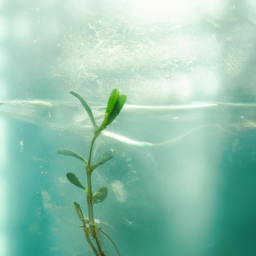
Types of Common House Plants: A Comprehensive Guide
Welcome to our comprehensive guide on common house plants! Whether you are a seasoned plant enthusiast or just starting your indoor gardening journey, this article will provide you with an in-depth understanding of various types of common house plants. From vibrant foliage to delicate blooms, there is a house plant for everyone’s taste and skill level.
1. Succulents
Succulents have gained immense popularity in recent years due to their unique appearance and low maintenance requirements. These plants are known for their fleshy leaves and ability to store water, making them perfect for those who tend to forget regular watering. Succulents come in various shapes, sizes, and colors, allowing you to create stunning displays.
When it comes to succulents, it’s essential to choose the right potting mix. They thrive in well-draining soil, so a mixture of potting soil, sand, and perlite is ideal. Place your succulent in a bright spot, preferably near a window, where it can receive indirect sunlight. Remember to water sparingly, allowing the soil to dry out between waterings.
Some popular succulent varieties include Aloe Vera, Echeveria, Jade Plant, and Haworthia. Each type offers its own unique charm and can be an excellent addition to your indoor garden.
2. Foliage Plants
Foliage plants are beloved for their lush green leaves, which can instantly breathe life into any space. These plants are known for their air-purifying qualities, making them excellent choices for improving indoor air quality. Foliage plants come in various shapes, sizes, and textures, allowing you to create visually appealing arrangements.
When caring for foliage plants, it’s crucial to provide them with bright, indirect light. Avoid placing them in direct sunlight, as it can scorch their delicate leaves. These plants prefer well-draining soil, so make sure the pot has drainage holes to prevent waterlogging. Water your foliage plants when the top inch of soil feels dry to the touch.
Some popular foliage plant options include Snake Plant, Pothos, Spider Plant, and Peace Lily. Each of these plants offers unique foliage patterns and growth habits, making them perfect for adding a touch of greenery to your home.
3. Flowering Plants
Flowering plants are a favorite among plant enthusiasts due to their vibrant blooms and ability to brighten up any space. These plants add a splash of color and fragrance to your indoor garden, creating a visually appealing and inviting atmosphere. From delicate petals to bold blossoms, flowering plants come in a wide range of varieties.
Caring for flowering plants requires providing them with the right amount of light and water. Most flowering plants prefer bright, indirect light, although some may tolerate partial shade. Water your flowering plants regularly, ensuring the soil remains evenly moist but not waterlogged. Deadheading spent flowers can encourage continuous blooming.
Some popular flowering plant choices include Orchids, African Violets, Geraniums, and Anthuriums. Each of these plants offers unique blooms and requires specific care, so be sure to research their individual needs before bringing them home.
Now that you have a comprehensive understanding of various types of common house plants, you can confidently choose the perfect plants for your indoor garden. Whether you prefer the low-maintenance beauty of succulents, the lush foliage of foliage plants, or the vibrant blooms of flowering plants, there is a house plant that suits your preferences and lifestyle. Happy gardening!
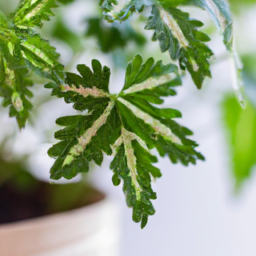
How to Care for Common House Plants: Essential Tips and Tricks
Welcome to the ultimate guide on how to care for common house plants! Whether you’re a seasoned plant enthusiast or just starting your indoor gardening journey, this article will provide you with essential tips and tricks to ensure your house plants thrive and beautify your living space. So, let’s dive in and explore the wonderful world of indoor plants!
Choosing the Right House Plants
Before we delve into the care tips, it’s crucial to select the right house plants that suit your lifestyle and home environment. Consider factors such as lighting conditions, temperature, humidity, and available space. Here are some popular and easy-to-care-for house plants to get you started:
1. Snake Plant (Sansevieria Trifasciata): Known for its air-purifying abilities, the snake plant thrives in low light conditions and requires minimal watering.
2. Pothos (Epipremnum Aureum): This vining plant is perfect for beginners. It can tolerate various light conditions and prefers moderate watering.
3. Spider Plant (Chlorophytum Comosum): With its cascading foliage, the spider plant adds a touch of elegance to any room. It thrives in bright, indirect light and prefers evenly moist soil.
Providing Adequate Lighting
Light is one of the most crucial factors for the health and growth of house plants. Different plants have varying light requirements, so it’s essential to understand their needs:
1. Low Light Plants: Plants such as snake plants and ZZ plants can thrive in areas with minimal natural light. Place them in rooms with north-facing windows or farther away from windows in brighter rooms.
2. Medium Light Plants: Plants like pothos and philodendrons prefer bright, indirect light. Place them near east or west-facing windows, but avoid direct sunlight to prevent leaf burn.
3. High Light Plants: Plants such as succulents and cacti require direct sunlight for several hours a day. South-facing windows are ideal for these light-loving plants.
Remember to rotate your plants periodically to ensure even growth, as they tend to lean towards the light source.
Watering and Humidity Needs
Proper watering is essential for the health of your house plants. Overwatering or underwatering can lead to root rot or dehydration. Here are some general watering guidelines:
1. The Finger Test: Stick your finger about an inch into the soil. If it feels dry, it’s time to water. If it’s still moist, hold off on watering for a few more days.
2. Watering Techniques: Water your plants thoroughly until water drains out of the bottom of the pot. Discard any excess water to avoid waterlogging. Allow the soil to dry out slightly between waterings, but don’t let it completely dry out.
3. Humidity: Most common house plants prefer moderate humidity levels. You can increase humidity by grouping plants together or using a humidifier. Alternatively, misting the leaves occasionally can also provide a humidity boost.
Fertilizing and Pruning
Regular fertilizing and pruning are essential for the overall well-being and appearance of your house plants:
1. Fertilizing: Use a balanced, water-soluble house plant fertilizer during the growing season (spring and summer). Follow the instructions on the packaging for the correct dosage and frequency. Avoid fertilizing during the dormant winter months.
2. Pruning: Remove any yellowing or dead leaves to maintain the plant’s health and aesthetics. Prune leggy stems to encourage bushier growth. Use clean, sharp scissors or pruning shears to prevent the spread of diseases.
3. Propagation: Many house plants can be propagated through stem cuttings or division. This allows you to expand your plant collection or share cuttings with friends and family.
By following these essential care tips and tricks, you’ll be well on your way to becoming a successful house plant parent. Remember to observe your plants closely and adjust their care as needed. Happy indoor gardening!
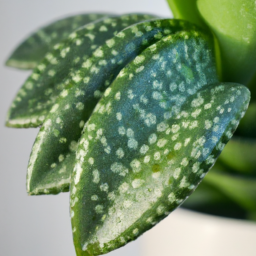
Best Common House Plants for Beginners: Easy-to-Grow Options
Are you new to the world of indoor gardening and looking for some easy-to-grow house plants to start with? Look no further! In this article, we will guide you through the best common house plants for beginners. These plants not only add beauty and freshness to your living space but also require minimal care and attention. Let’s dive in and explore these beginner-friendly options.
1. Spider Plant
The Spider Plant, scientifically known as Chlorophytum comosum, is an excellent choice for beginners. It has long, arching leaves with green and white stripes, adding a touch of elegance to any room. Spider Plants are known for their air-purifying qualities, making them ideal for improving indoor air quality.
These plants thrive in bright, indirect light but can tolerate lower light conditions as well. They prefer well-draining soil and should be watered when the top inch of soil feels dry. Spider Plants are also known for their ability to produce “spiderettes,” small plantlets that can be easily propagated and shared with friends and family.
In terms of care, Spider Plants are forgiving and can withstand occasional neglect. However, keep them away from direct sunlight as it can scorch their leaves. With proper care, your Spider Plant will flourish and become a beautiful addition to your indoor garden.
2. Snake Plant
The Snake Plant, also known as Sansevieria or Mother-in-Law’s Tongue, is another fantastic option for beginners. With its tall, upright leaves that come in various shades of green, the Snake Plant adds a touch of sophistication to any space. It is a hardy plant that can tolerate a wide range of conditions, making it perfect for those who may forget to water their plants regularly.
Snake Plants thrive in indirect light but can adapt to low light conditions as well. They prefer well-draining soil and should be watered sparingly, allowing the soil to dry out between waterings. Overwatering can lead to root rot, so it’s essential to strike the right balance.
One of the Snake Plant’s remarkable qualities is its ability to purify the air by filtering out toxins like formaldehyde and benzene. This makes it an ideal choice for bedrooms or offices where air quality may be a concern. With its low maintenance requirements and air-purifying capabilities, the Snake Plant is a must-have for any beginner indoor gardener.
3. Pothos
Pothos, scientifically known as Epipremnum aureum, is a popular house plant that is both beautiful and easy to care for. Its heart-shaped leaves come in various shades of green and can trail down gracefully, making it a perfect choice for hanging baskets or shelves.
Pothos thrives in bright, indirect light but can tolerate lower light conditions as well. It prefers well-draining soil and should be watered when the top inch of soil feels dry. Overwatering can lead to root rot, so it’s crucial to avoid excessive watering.
One of the Pothos’ remarkable features is its ability to purify the air by removing toxins like formaldehyde, benzene, and xylene. This makes it an excellent plant for improving indoor air quality. Pothos is also known for its resilience and can bounce back even if neglected for a while.
With its versatility and forgiving nature, Pothos is an excellent choice for beginners who want to add a touch of greenery to their homes without much hassle. Just remember to keep it out of reach of pets and children as it can be toxic if ingested.
Now that you have learned about these beginner-friendly house plants, it’s time to bring some greenery into your living space. Whether you choose the Spider Plant, Snake Plant, or Pothos, these easy-to-grow options will surely thrive with minimal care and provide you with endless joy. Happy indoor gardening!
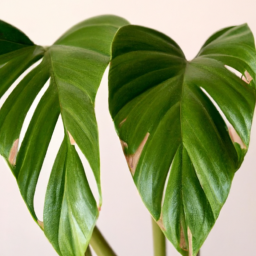
Common House Plants for Air Purification: Enhancing Indoor Air Quality
Indoor air quality is a significant concern for many people, especially those who spend a significant amount of time indoors. The air inside our homes can be filled with various pollutants such as dust, chemicals, and volatile organic compounds (VOCs). These pollutants can have adverse effects on our health, leading to respiratory issues, allergies, and even long-term health problems.
Fortunately, there is a natural and effective way to improve indoor air quality – common house plants. Certain plants have the remarkable ability to filter and purify the air by removing harmful toxins and releasing oxygen. In this article, we will explore four of the most effective common house plants for air purification, allowing you to create a healthier and more refreshing indoor environment.
1. Snake Plant (Sansevieria trifasciata)
The Snake Plant, also known as Mother-in-Law’s Tongue, is a popular choice for indoor air purification. It is an excellent plant for beginners as it is low maintenance and can tolerate a wide range of light conditions. The Snake Plant is particularly effective at removing formaldehyde, a common indoor air pollutant found in cleaning products, furniture, and carpets.
In addition to its air-purifying qualities, the Snake Plant also releases oxygen at night, making it an ideal plant for bedrooms. It has long, upright leaves that are green with yellow edges, adding a touch of elegance to any indoor space. To care for a Snake Plant, place it in indirect sunlight and water it sparingly, allowing the soil to dry out between waterings.
Another benefit of the Snake Plant is its ability to convert carbon dioxide into oxygen during the night, making it a perfect plant to place in bedrooms. Its long, upright leaves are green with yellow edges, adding a touch of elegance to any indoor space. Care for the Snake Plant by placing it in indirect sunlight and watering it sparingly, allowing the soil to dry out between waterings.
Furthermore, the Snake Plant is known for its ability to absorb toxins such as nitrogen oxides and formaldehyde. It acts as a natural air purifier, improving the overall air quality in your home. With its low maintenance requirements and air-purifying benefits, the Snake Plant is a must-have for any indoor space.
2. Peace Lily (Spathiphyllum wallisii)
The Peace Lily is a beautiful flowering plant that not only adds aesthetic appeal to your home but also helps to purify the air. It is highly effective at removing common indoor pollutants such as benzene, trichloroethylene, and formaldehyde. The Peace Lily has glossy green leaves and elegant white flowers that bloom throughout the year.
One unique feature of the Peace Lily is its ability to indicate when it needs watering. The leaves will droop slightly, signaling that it’s time to water the plant. This makes it an excellent choice for those who are new to gardening or tend to forget about watering their plants.
To care for a Peace Lily, place it in a shady spot away from direct sunlight. Keep the soil slightly moist but avoid overwatering, as this can lead to root rot. Misting the leaves occasionally can help maintain the plant’s humidity requirements. With proper care, the Peace Lily will not only enhance your indoor air quality but also bring a sense of serenity to your living space.
3. Aloe Vera (Aloe barbadensis)
Aloe Vera is a versatile plant that is well-known for its medicinal properties. Not only does it have soothing effects on the skin, but it is also an excellent air purifier. Aloe Vera releases oxygen at night, making it an ideal plant to place in bedrooms for improved air quality while you sleep.
In addition to its air-purifying qualities, Aloe Vera is easy to care for and can thrive in various indoor conditions. It requires bright, indirect sunlight and well-draining soil. Aloe Vera plants are succulents, meaning they store water in their leaves, making them drought-tolerant. Water your Aloe Vera plant deeply but infrequently, allowing the soil to dry out completely between waterings.
Furthermore, Aloe Vera has been found to effectively remove formaldehyde and benzene from the air. These chemicals are commonly found in household cleaning products and can have detrimental effects on our health. By having an Aloe Vera plant in your home, you can reduce the levels of these pollutants and enjoy cleaner, fresher air.
4. Spider Plant (Chlorophytum comosum)
The Spider Plant is a popular choice for indoor gardening due to its resilience and air-purifying capabilities. It is highly effective at removing formaldehyde, xylene, and toluene from the air, making it an excellent choice for improving indoor air quality.
Spider Plants have long, arching leaves that are green with white stripes, giving them a unique and attractive appearance. They are relatively low maintenance and can adapt to a variety of light conditions, although they prefer bright, indirect sunlight. Water your Spider Plant when the top inch of soil feels dry, and be sure to avoid overwatering.
One interesting feature of Spider Plants is their ability to produce “spiderettes” or baby plants that dangle from the mother plant. These can be easily propagated by placing them in water or planting them directly in soil. This makes Spider Plants a great choice for those who want to expand their indoor plant collection.
In conclusion, incorporating common house plants into your indoor space can significantly enhance air quality by removing harmful toxins and releasing oxygen. The Snake Plant, Peace Lily, Aloe Vera, and Spider Plant are just a few examples of plants that possess air-purifying qualities. By following the care instructions specific to each plant, you can create a healthier and more refreshing environment within your home. So why not bring a touch of nature indoors and enjoy the benefits of cleaner air?
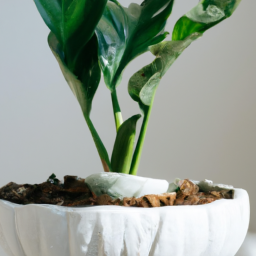
Common House Plants for Low-Light Environments: Beautifying Dimly Lit Spaces
Having a dimly lit space doesn’t mean you have to sacrifice the beauty and benefits of indoor plants. There are several common house plants that thrive in low-light environments, bringing life and vibrancy to even the darkest corners of your home. In this guide, we will explore five popular house plants that are perfect for low-light conditions.
1. Snake Plant (Sansevieria trifasciata)
The snake plant, also known as mother-in-law’s tongue, is a popular choice for low-light environments. It has long, upright leaves that are beautifully patterned with shades of green and yellow. Snake plants are known for their ability to purify the air by removing toxins like formaldehyde and benzene.
When it comes to caring for a snake plant, less is more. These plants prefer indirect or filtered light, making them ideal for dimly lit spaces. They are also drought-tolerant, so you don’t have to worry about watering them frequently. Allow the soil to dry out between waterings to prevent root rot.
Snake plants can grow in a variety of conditions, from low to bright light, but they thrive best in low-light environments. They are perfect for bedrooms, offices, and other areas with limited natural light.
2. ZZ Plant (Zamioculcas zamiifolia)
The ZZ plant is another excellent choice for low-light environments. It is a hardy plant with glossy, dark green leaves that add a touch of elegance to any space. The ZZ plant is known for its ability to tolerate neglect and low-light conditions, making it perfect for busy individuals or those with a less-than-green thumb.
ZZ plants can survive in extremely low-light conditions, such as windowless rooms or offices with only artificial lighting. However, they can also tolerate bright, indirect light. Water your ZZ plant sparingly, as overwatering can lead to root rot. Allow the soil to dry out completely between waterings.
This plant is not only beautiful but also helps purify the air by removing toxins like xylene and toluene. It is an excellent choice for bedrooms, bathrooms, or any area that lacks natural light.
3. Pothos (Epipremnum aureum)
Pothos, also known as Devil’s Ivy, is a popular trailing plant that thrives in low-light conditions. It has heart-shaped leaves that come in various shades of green, making it a visually appealing addition to any room. Pothos is incredibly versatile and can be grown in water or soil.
When it comes to light requirements, pothos can tolerate a wide range of conditions, from low to bright indirect light. However, it thrives best in medium to low-light environments. Avoid direct sunlight, as it can scorch the leaves and cause them to lose their vibrant color.
Pothos is a low-maintenance plant that doesn’t require frequent watering. Allow the soil to dry out between waterings, and be careful not to overwater, as it can lead to root rot. This plant is perfect for hanging baskets or placed on high shelves, adding a touch of greenery to any low-light space.
4. Chinese Evergreen (Aglaonema)
The Chinese Evergreen is a popular house plant known for its beautiful foliage and ability to thrive in low-light conditions. It has broad, lance-shaped leaves that come in various shades of green, silver, and even red. Chinese Evergreen plants are not only visually appealing but also known for their air-purifying qualities.
Chinese Evergreens prefer low to medium light conditions and can tolerate fluorescent lighting, making them perfect for offices or rooms with limited natural light. Avoid direct sunlight, as it can scorch the leaves. Water your Chinese Evergreen when the top inch of soil feels dry, and be careful not to overwater.
This plant is relatively low-maintenance and can withstand occasional neglect. It is an excellent choice for adding a pop of color to any low-light space, whether it’s a living room, bedroom, or even a bathroom.
5. Peace Lily (Spathiphyllum)
The Peace Lily is a popular choice for low-light environments due to its ability to thrive in shade and its beautiful white flowers. It has glossy, dark green leaves that provide an attractive backdrop to the elegant white blooms. Peace Lilies are not only visually appealing but also known for their air-purifying qualities.
Peace Lilies prefer medium to low-light conditions and can tolerate fluorescent lighting. However, they should be kept away from direct sunlight, as it can scorch the leaves. Water your Peace Lily thoroughly and allow the top inch of soil to dry out before watering again.
This plant is relatively low-maintenance and can even indicate when it needs watering by slightly drooping its leaves. It is an excellent choice for bedrooms, living rooms, or any low-light space that needs a touch of elegance.
In conclusion, these five common house plants are perfect for beautifying dimly lit spaces. Whether you choose the snake plant, ZZ plant, pothos, Chinese Evergreen, or Peace Lily, you can enjoy the benefits of indoor plants even in low-light environments. Remember to consider each plant’s light requirements, water sparingly, and enjoy the beauty they bring to your home.
Frequently Asked Questions (FAQ)
1. What are common house plants?
Common house plants are plants that are typically grown indoors in pots or containers. They are popular choices for indoor gardening due to their ability to thrive in indoor environments and their aesthetic appeal.
2. What are the benefits of having house plants?
House plants offer numerous benefits, including improving indoor air quality by reducing pollutants, increasing humidity levels, and providing a calming and relaxing atmosphere. They can also help boost mood, reduce stress, and add beauty to your living spaces.
3. Which house plants are easy to care for?
Some easy-to-care-for house plants include pothos, snake plant, spider plant, ZZ plant, and peace lily. These plants are known for their resilience and ability to tolerate a variety of light and watering conditions.
4. How often should I water my house plants?
The watering frequency for house plants varies depending on the type of plant, its size, and the environmental conditions. As a general rule, it’s best to allow the top inch of soil to dry out before watering again. However, it’s important to research the specific watering needs of each plant to ensure proper care.
5. What kind of light do house plants need?
The light requirements for house plants differ based on their species. Some plants thrive in bright, direct sunlight, while others prefer indirect or low light conditions. It’s crucial to understand the light preferences of your specific house plants to provide them with the appropriate amount of light.
6. Can house plants improve indoor air quality?
Yes, house plants can help improve indoor air quality by absorbing carbon dioxide and releasing oxygen through the process of photosynthesis. Additionally, certain plants, such as peace lilies and spider plants, are known for their ability to filter and remove toxins from the air.
7. How do I prevent common house plant pests?
To prevent common house plant pests, it’s essential to regularly inspect your plants for any signs of infestation, such as yellowing leaves, webs, or small insects. You can use natural remedies like neem oil or insecticidal soaps to control pests. Additionally, maintaining proper plant hygiene and avoiding overwatering can help prevent pest problems.
8. Can I use regular potting soil for my house plants?
While regular potting soil can be used for some house plants, it’s often recommended to use a well-draining potting mix specifically formulated for indoor plants. These mixes provide adequate drainage and aeration, preventing issues like root rot. Always check the specific soil requirements for each plant species.
9. How do I fertilize my house plants?
House plants generally benefit from regular fertilization during their active growing season, which is typically spring and summer. You can use a balanced, water-soluble house plant fertilizer and follow the instructions on the packaging for proper dilution and application. Be cautious not to over-fertilize, as it can harm the plants.
10. Are house plants safe for pets?
While many house plants are safe for pets, some can be toxic if ingested. It’s crucial to research the toxicity of specific plants before bringing them into a pet-friendly environment. Common pet-safe house plants include spider plants, Boston ferns, and areca palms. However, it’s always best to err on the side of caution and keep plants out of reach of curious pets.
Dr. Olivia Green is a botanist with over two decades of experience in indoor plant cultivation. She holds a Ph.D. in Plant Biology and has dedicated her career to researching plant behavior in controlled environments. Dr. Green is passionate about helping plant enthusiasts master the art of indoor gardening through her extensive knowledge and practical insights.


